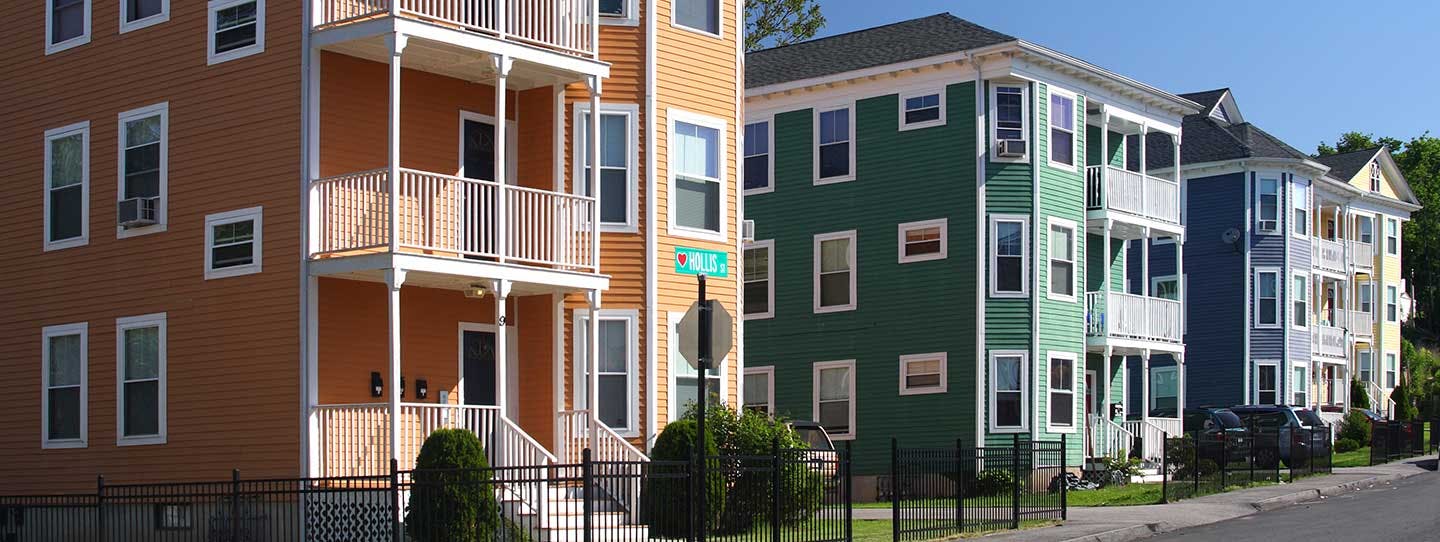
Whether it's your first real estate investment or you’re a seasoned pro, investing in multifamily rental properties carries its own challenges. Make sure you have what it takes to succeed before committing to such a considerable investment.
What is a multifamily property?
A multifamily property is a residential property designed to house many different tenants (or groups of tenants) in separate units within a single structure. In this post, we’ll focus on small, low-density multifamily rentals. This type of investment is enticing to both new and experienced investors. But you’ll want to consider the pros and cons before diving in headfirst.
Pros of Investing in Multifamily Properties
Packed with Potential
One of the most obvious pros of investing in a multifamily property is the high return on potential revenue that’s offered. One successfully managed multifamily property easily makes way for the purchase of more properties in the future, exponentially growing your investment return. Plus, regular passive income is part and parcel of the investment, especially if you invest in a high-demand market.
Scalability
Another thing investors love about multifamily properties is the potential for scalability. Once you’ve got one multifamily property up and running, it's much easier to finance and sustain future investments down the line.
Plus, in such a large investment you have the opportunity to build your own team. There’s no reason to embark on big decisions alone. In the real estate world, very few investors are true lone wolves. Talk to bankers and determine if you’re interested in having co-investors. Contact local contractors who will conduct repairs and regular maintenance. Gather the proper legal resources to ensure you’re covered and understand your responsibilities.
If, however, this all seems overwhelming then fear not! Most property management companies can help you find all of the right contacts you’ll need.
Convenience
Many investors will choose to live on the property, which can be an added convenience since their responsibilities are nearby. You may even be able to live rent-free if the financials work out.
Since multifamily property management can offer convenience to fit your lifestyle, what lifestyle are you looking forward to? Are you interested in a side hustle or in creating a full-time job for yourself? If you get clear on the answers to these questions early on, you can ensure that you make decisions along the way that accomplish your long-term goals.
Cons of Investing in Multifamily Properties
Competition and Cost
There may be a lot of local competition, depending on your real estate market. You’ll need to research how the population compares to the amount of housing available in order to see if your market is saturated. Will you be able to offer competitive pricing and still make money? Investing in multifamily properties can be cost-prohibitive for many investors since it requires so much cash up front. You may need co-investors in order to get started.
You’ll also want to consider the local landscape. Do you already live in an in-demand real estate market like Dallas, DC, LA, Chicago, Vegas, or Orlando? Working within a high-demand market means you’ll be competing with experienced investors vying for the same opportunities. This isn’t necessarily a negative thing, but you will want to consider how competitive the market is when building your team. Hiring a management company with experience in your market may be a smart move.
Management Can Get Overwhelming
With all that potential, however, comes quite a bit of management. You’re responsible for regular maintenance, responding to tenant emergencies, and a whole lot more. Many first-time investors—and even seasoned pros—choose to hand over the management to a property management company in order to ease that burden.
Tenant Turnover
And yet, with more units you may encounter another common frustration: tenant turnover. Having an empty unit is like leaking valuable income. Every day a unit is vacant, you’re losing money. Ensuring those units are filled needs to be a major priority.
The Learning Curve
Investing in multifamily properties carries a major learning curve, whether you’re a first-time investor or just dipping your toe into multifamily units.
The financing is more complex than buying and renting a single-family home. Before you buy any property you’ll want to have had conversations with several banks or mortgage lenders. Understand what you’re able to invest and how much financial institutions will be able to loan you. Be realistic about the funds you have at your disposal so you don’t wind up underwater.
Also, real estate investment comes with a certain amount of new “lingo” to master. In order to feel confident in what you’re talking about (and investing in) you’ll want to be familiar with the definitions of common real estate terms. If you’re not sure what the Fair Housing Act is, or how to calculate your gross rental yield, then spend some time understanding the real estate investing terms and definitions that every residential property investor needs to know.
Another element of the learning curve is unique to every new investment: understanding the neighborhood. Remember that you’re not just investing in a property, you’re investing in the neighborhood itself. What else does the location you’re considering offer tenants? Look for school ratings nearby, local parks and recreation centers, grocery stores, and other amenities. Knowing your neighborhood’s perks will help you advertise the property properly and attract the right tenants.
As with other challenges involved in multifamily investing, a property management company can be a valuable partner when it comes to understanding the industry and your specific market. You can rely on experienced property managers to handle many day-to-day responsibilities and share their expertise to help you make better-informed investment choices.
Tips For Smarter Investing
When are you investing? Are you thinking ahead a few years or looking to invest right now? Do you have liquid capital available to invest? How much can you afford? One simple way to make sure you’re investing wisely is to calculate your cap rate. Cap rates are a dependable way to measure whether an investment you’re considering is worth it. It’s important to calculate accurately when investing in low-density multifamily properties. You can calculate a property’s cap rate by dividing your net operating income (NOI) by the current market value of the property, then multiplying the result by 100. A cap rate of between five and ten percent is considered “good”, but you should always consider your risk tolerance to know what’s safe for you. Gravitate toward properties with lower cap rates if you’re more risk-averse.
